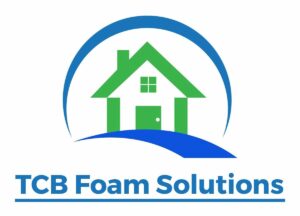Concrete Lifting, Repair & Leveling
Concrete lifting & levelling is the best alternative to concrete replacement for a fraction of the cost.
Here at TCB Foam Solutions, we use an innovative process of injecting polyurethane foam under the existing slab to fix/level uneven concrete. Customers with concrete issues often compare polyurethane with mud jacking as a way to fix their concrete. Learn about the Foam Jacking Advantage >
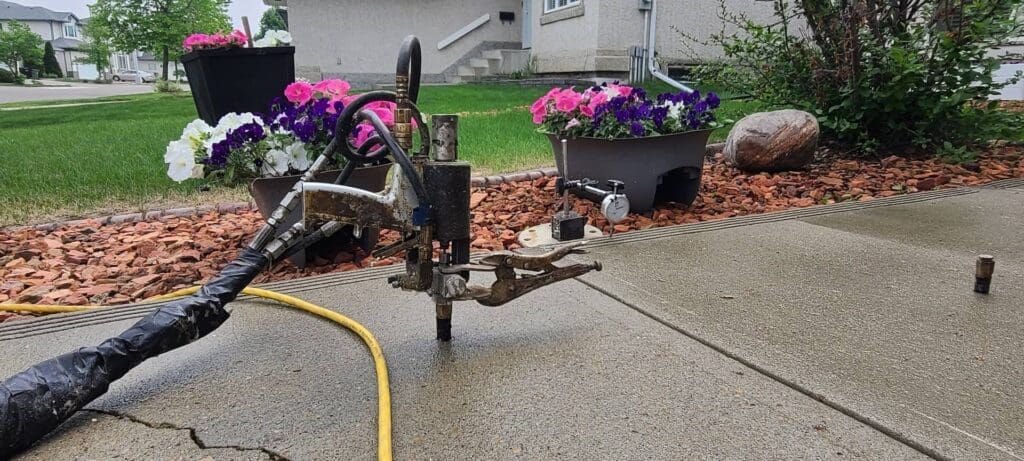

Durable
Polyurethane is lightweight and will never lose density.

Quick
Cure time for the polyurethane is less than an hour. This means when we leave, you can drive on it.

Waterproof
Polyurethane is waterproof which minimizes weathering and washout of the foam.

Eco Friendly
Made from recycled materials. It is the best alternative to removing concrete and avoids filling the landfills.

Cost-Effective
Polyurethane lifting is less expensive than replacement.
Foam Jacking Process
-
- Drill 5/8” holes throughout the concrete to be lifted, ensuring foam will have full coverage.
- Through injection ports which are installed in the 5/8” holes, foam is injected through an air-tight pressurized system under the concrete which then expands and lifts.
- Once the slab is raised to the desired height, the injection ports are removed and holes are patched.
- We pack up and let you enjoy your raised concrete with the concrete being able to bear weight immediately!
Foam Jacking Advantage
Polyurethane is a quicker, more efficient and water-resistant way to repair concrete. Unlike mud jacking, when the polyurethane is injected it expands under the surface and fills voids to create desired support. Polyurethane is lightweight and will not wash away or lose density over time, which are common downsides to mud jacking.
Mud Jacking
- MATERIAL WEIGHT: 100Lbs Per Cubic Foot
- BREAKDOWN: Shrinks as it dries, does not repel water causing it to wash away
- HOLE SIZE: 2″
- MATERIAL COVERAGE: Dependent on slurry/mud consistency
- TIME: Most jobs are completed in a few hours, with multiple trucks
- ENVIRONMENTAL IMPACT: Lots of water, dusty, messy
- CURE TIME: 24-48Hrs Cure Time
Foam Jacking
- MATERIAL WEIGHT: 4Lbs Per Cubic Foot
- BREAKDOWN: Does not breakdown, shrink or wash away
- HOLE SIZE: 5/8″ (Size of a nickel)
- MATERIAL COVERAGE: Flows and fills voids. Consistent foam mixture
- TIME: Most jobs are completed in a few hours, with 1 truck
- ENVIRONMENTAL IMPACT: Environmentally inert and impervious to water
- CURE TIME: Able to be driven on same day
Examples of Our Concrete Repair Work
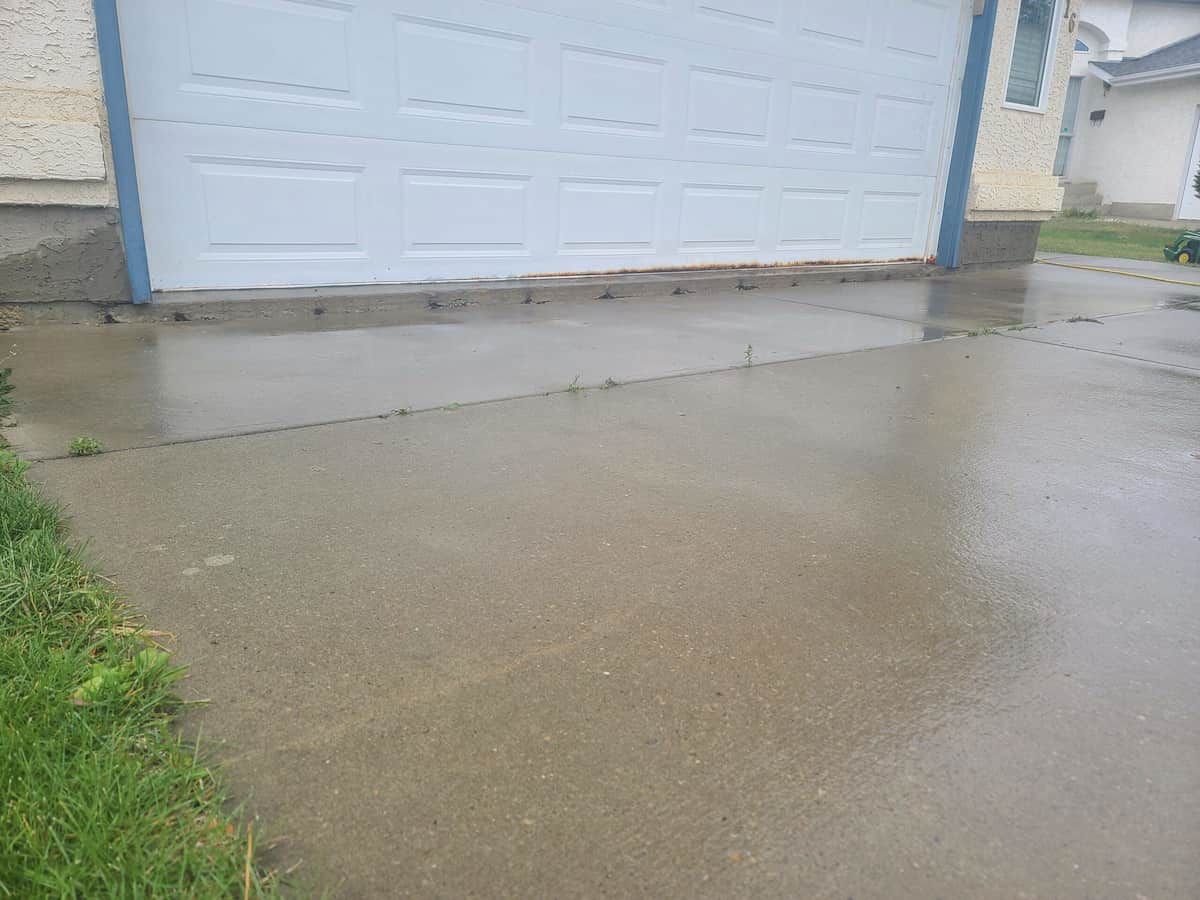
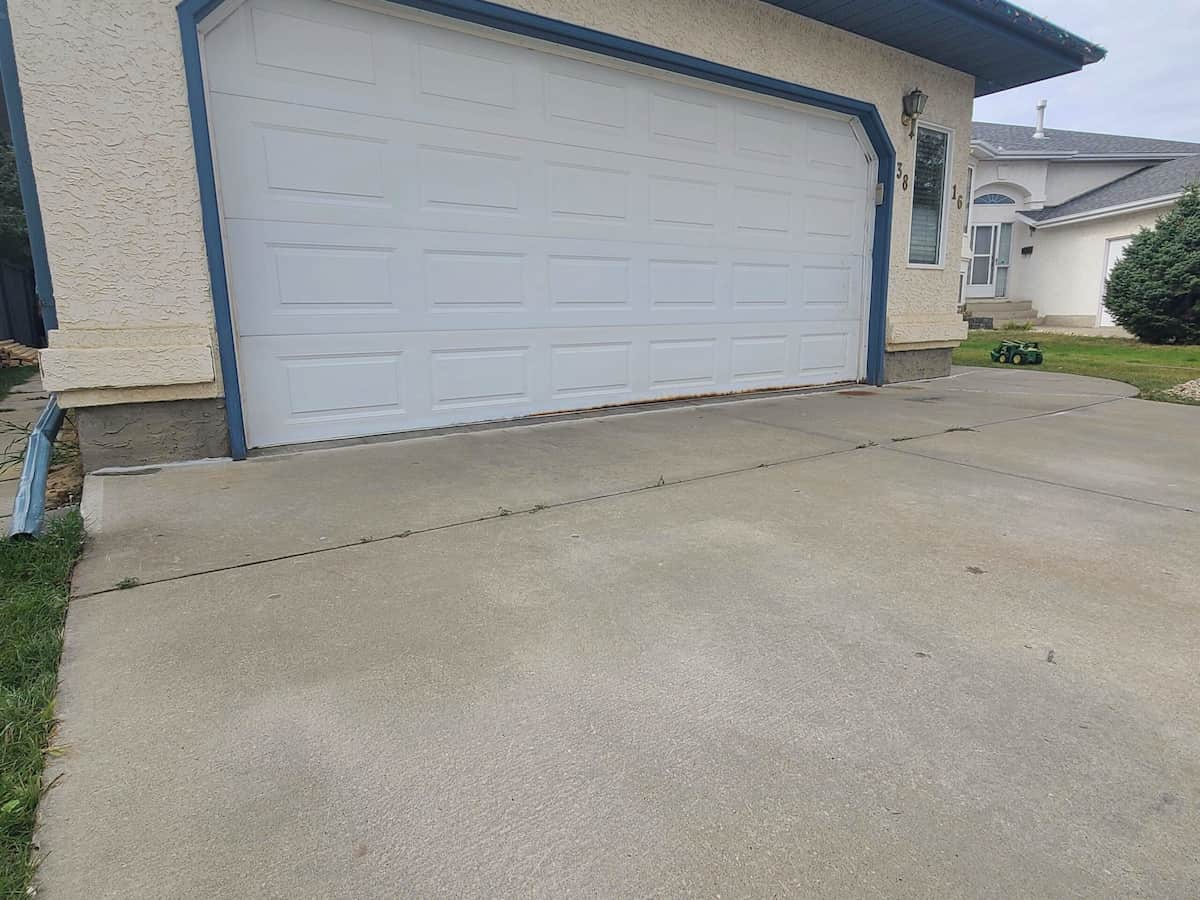
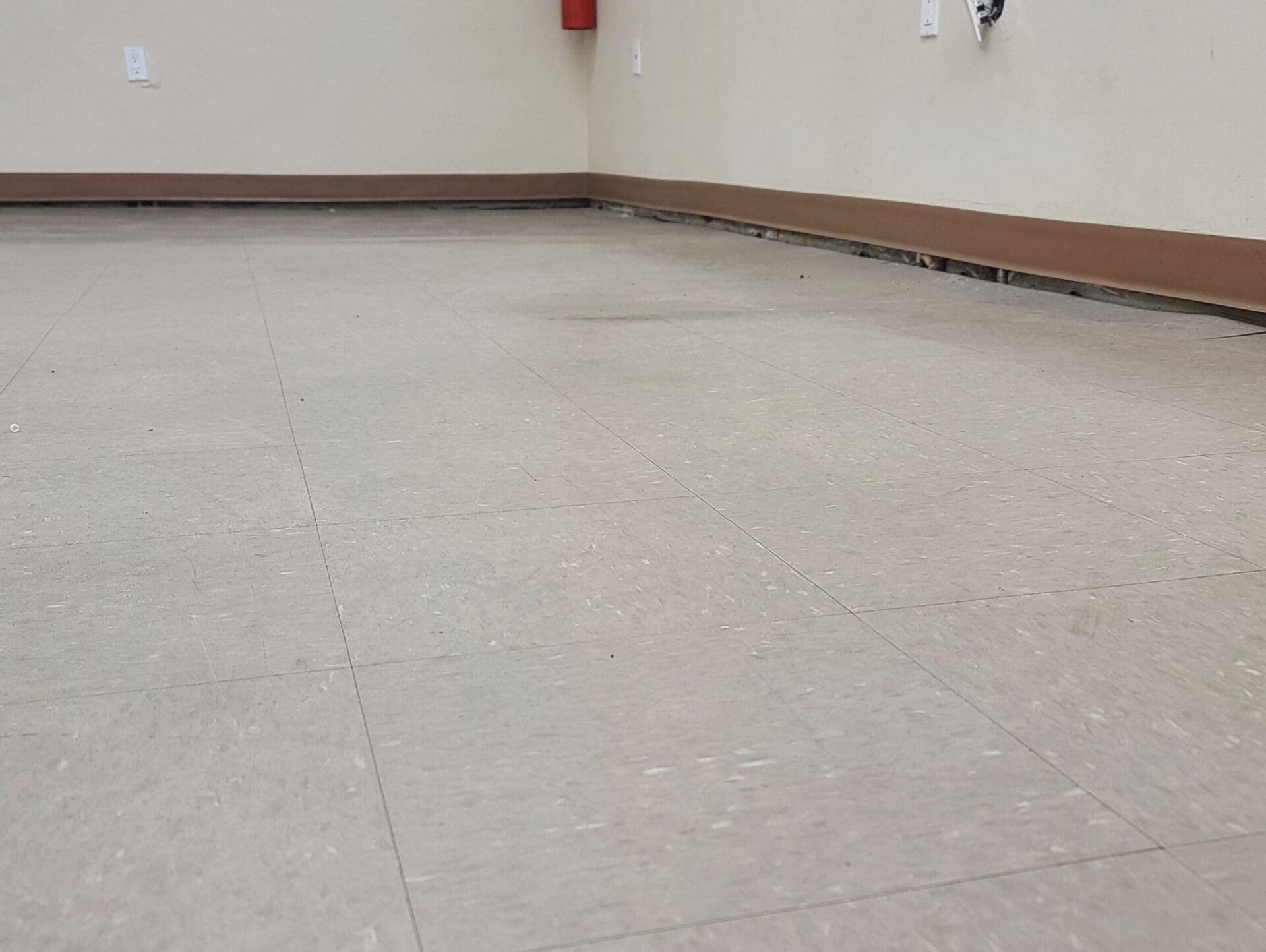
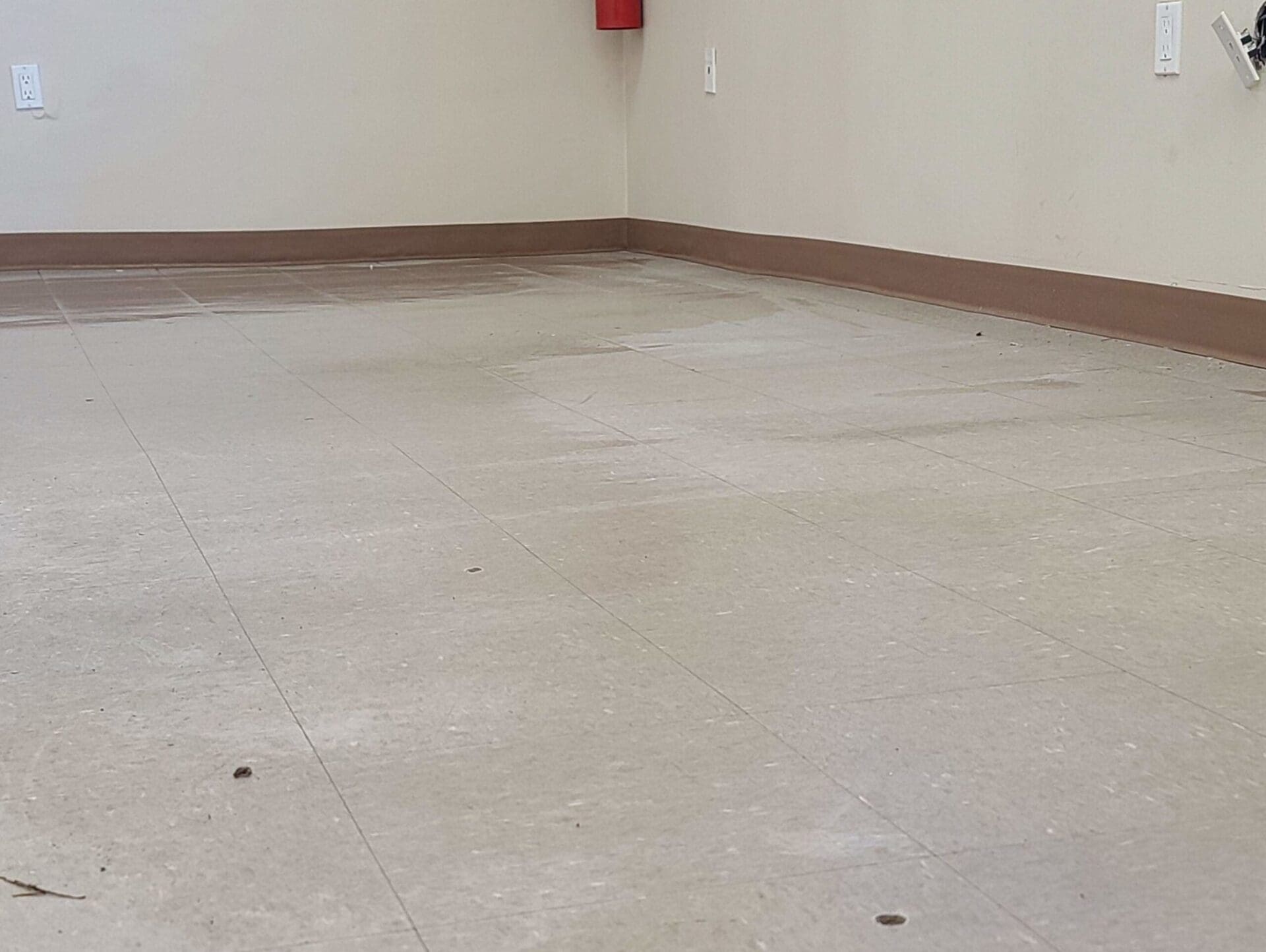
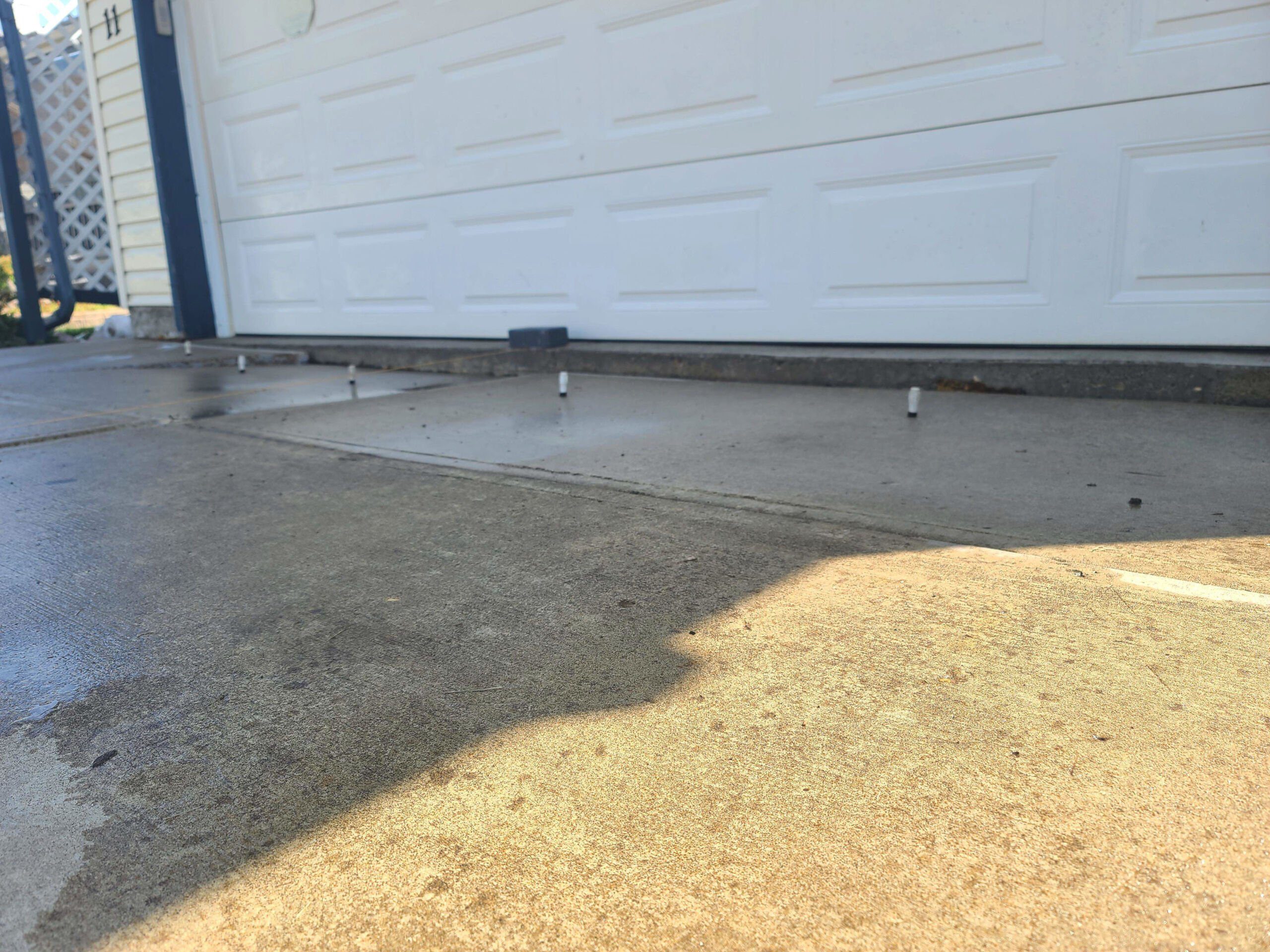
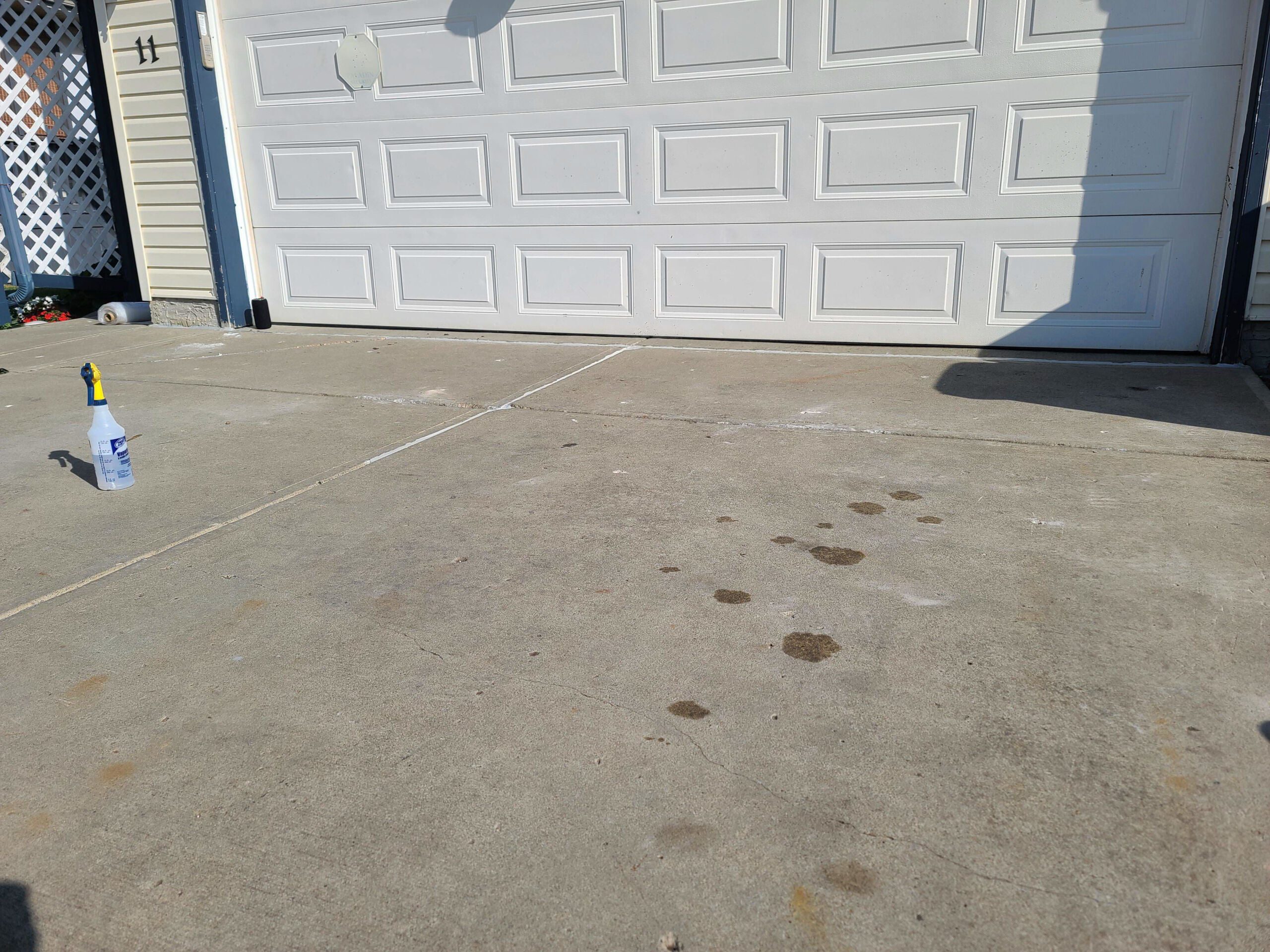
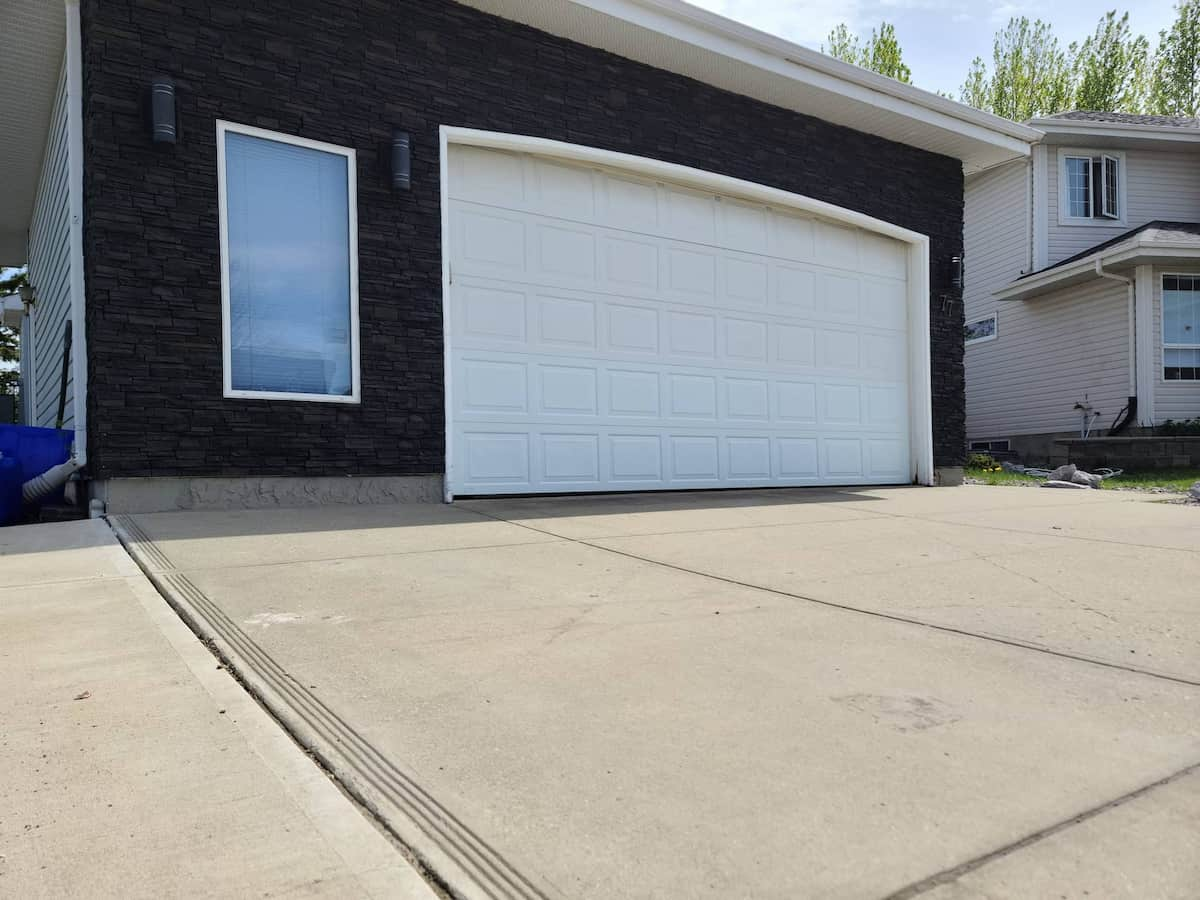
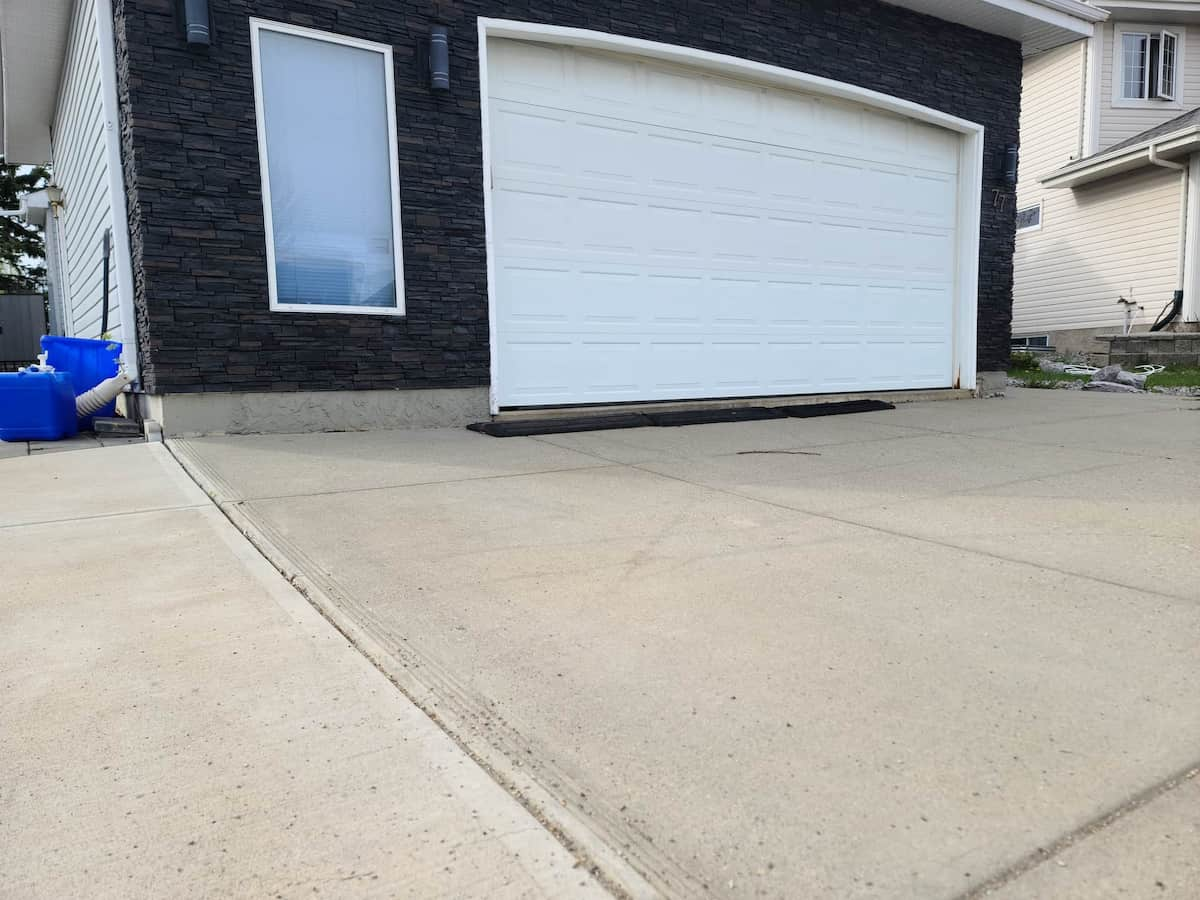
Why Concrete Damage Happens
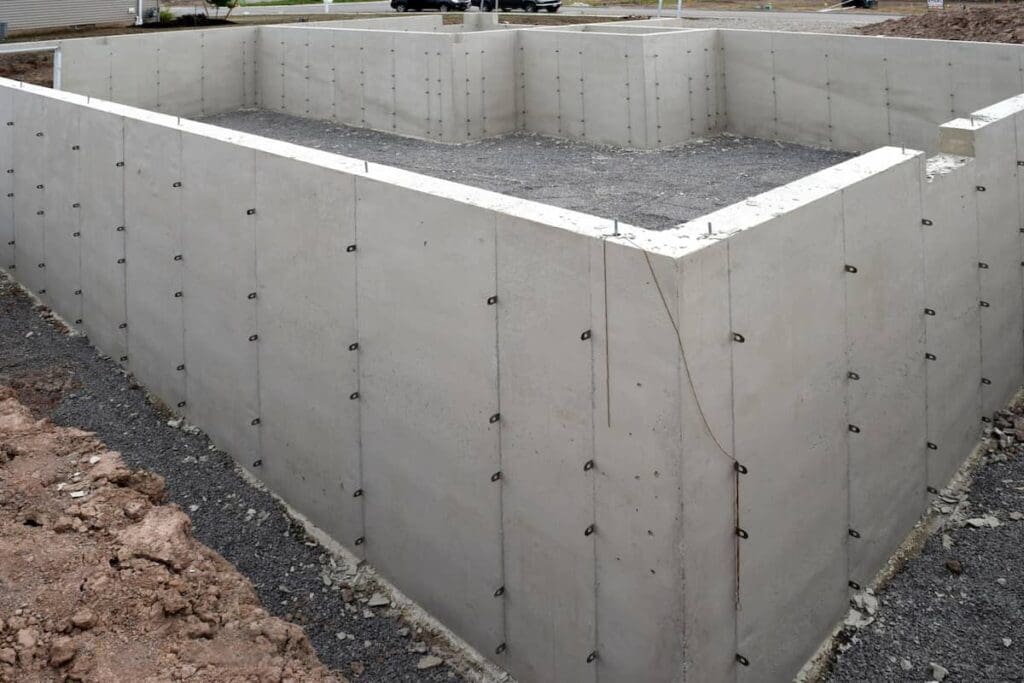
Poor Compaction
When your home is being built it is usually surrounded by loose soil and backfill. Most homes in Alberta have basements. When the basement is being dug out the area around the foundation is over-excavated to allow for the form work to be installed. Once the basement walls have been poured the area is “backfilled”. This loose fill is not compacted causing it to settle over time. This area is then prepped for sidewalks, driveways, patios, garage pads and basement floors. The lack of adequate compaction in these areas ultimately leads to sinking concrete and voids.

Water
Water influences soil compaction. A home that does not have proper drainage, combined with typical rain and snowmelt, will see erosion and the closing of any open-air pockets. This will cause the soil to collapse in on itself subsequently resulting in the sinking and cracking of concrete and void formation. Pipe leaks, burst pipes or overwatering of your lawn may cause the same effects. Here at TCB Foam Solutions, the polyurethane foam we use is water-resistant which can improve underlying water issues that cause the problem in the first place.
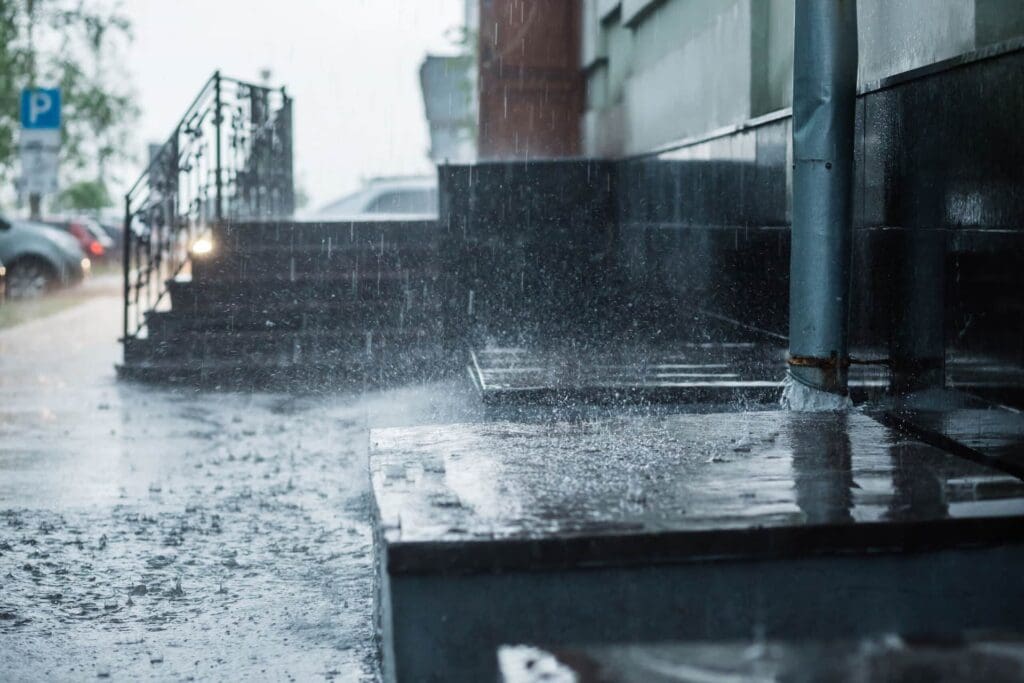
Inadequate Drainage
Water running along concrete slabs together with the constant high moisture content in the soil will eventually lead to erosion. Every residence requires a proper drainage system with gutter and down-spouts leading away from the house. Without this, the constant water pooling will inevitably take its toll on your foundation and any other nearby concrete base through erosion.
